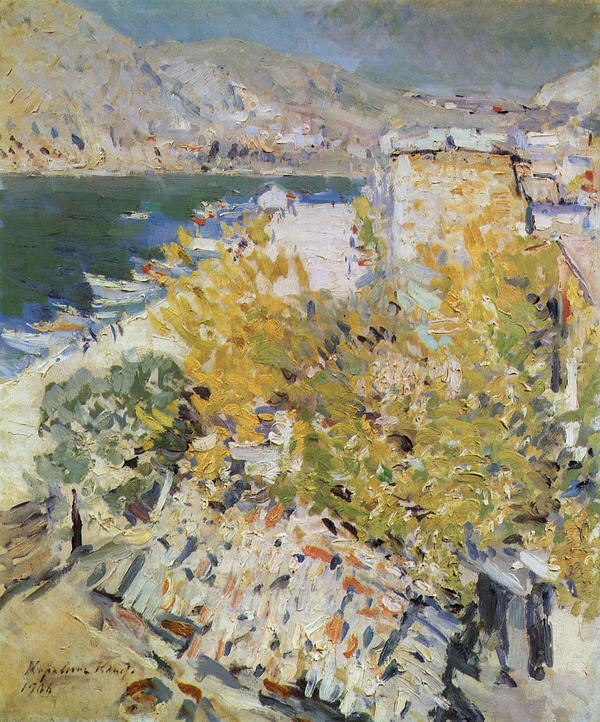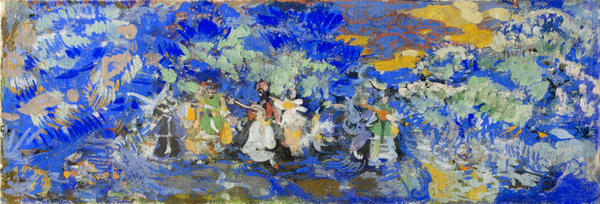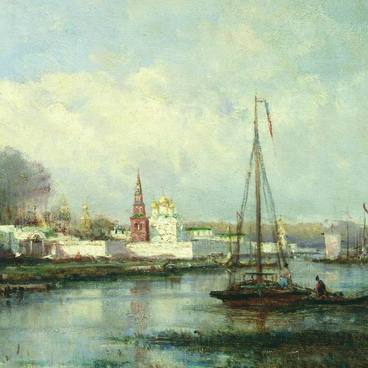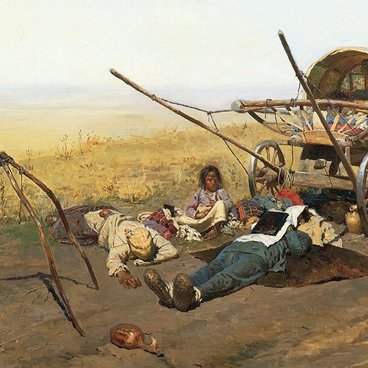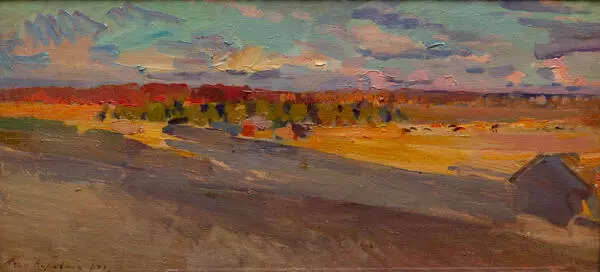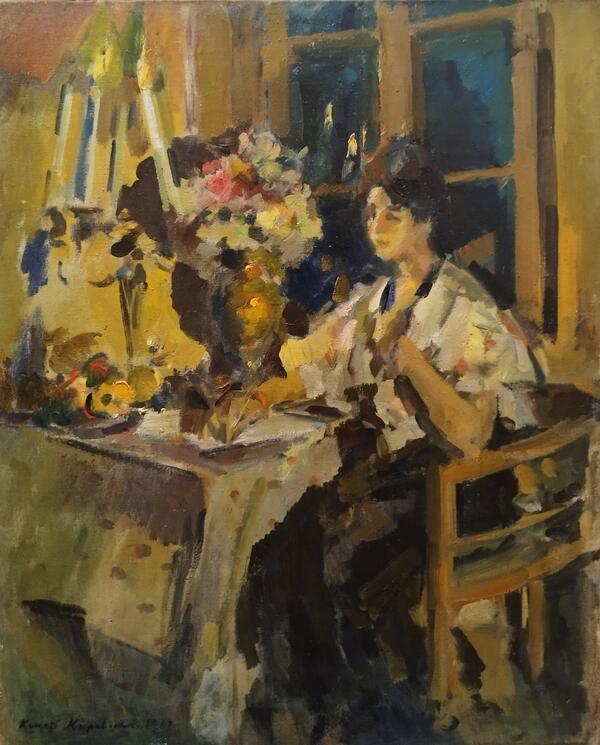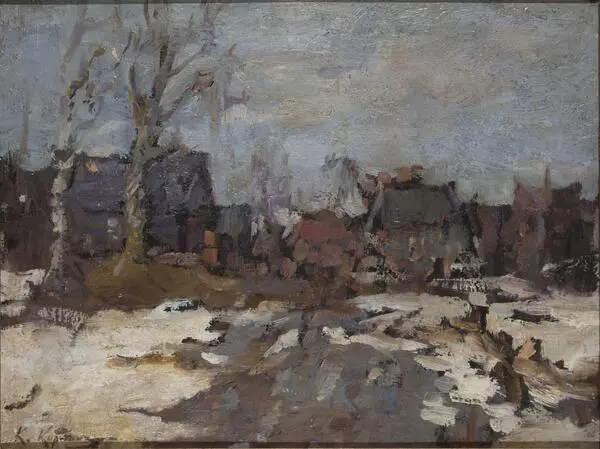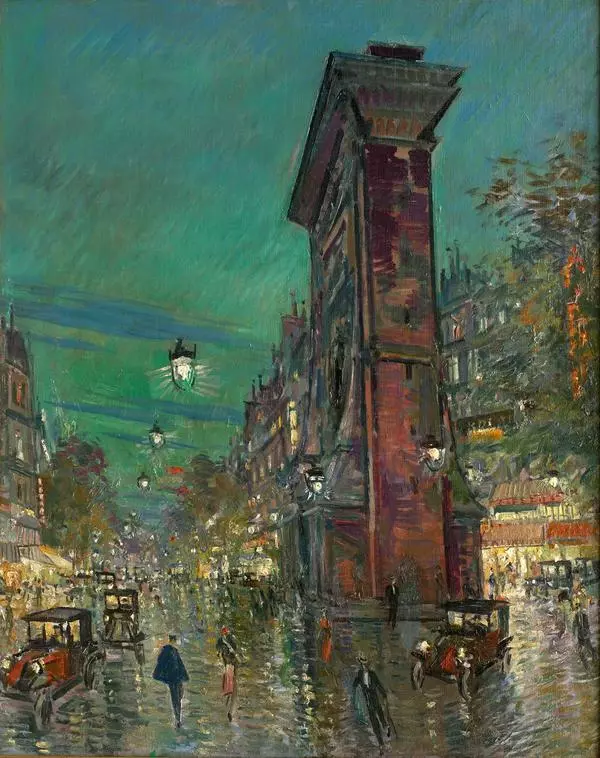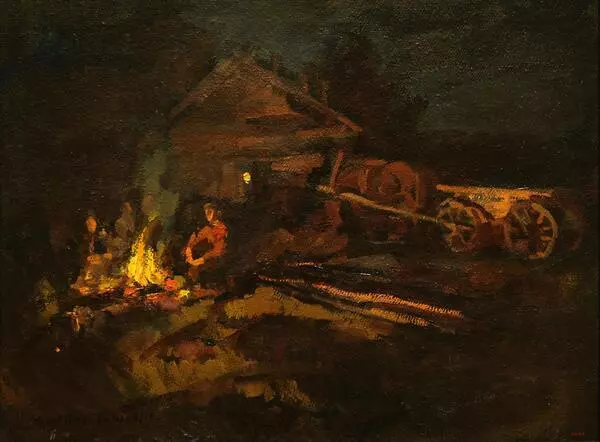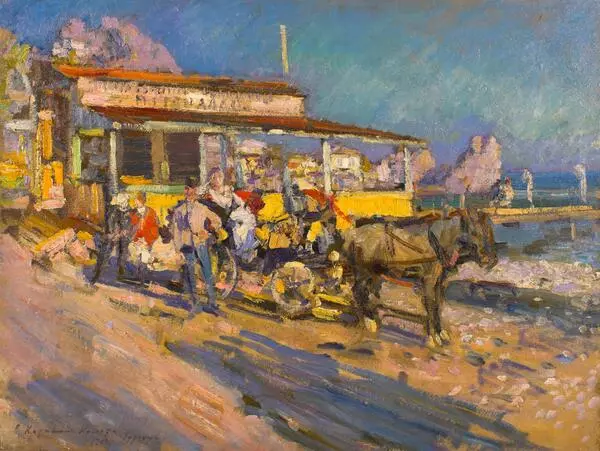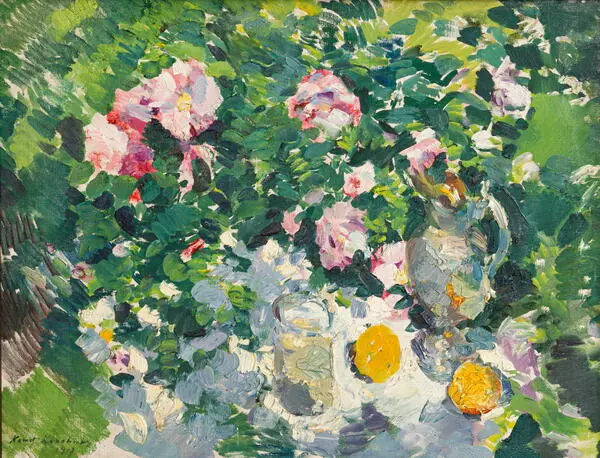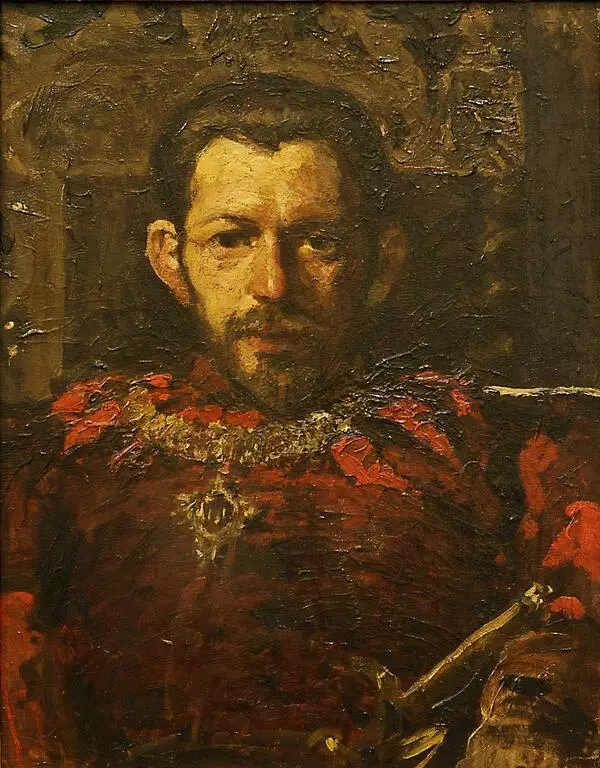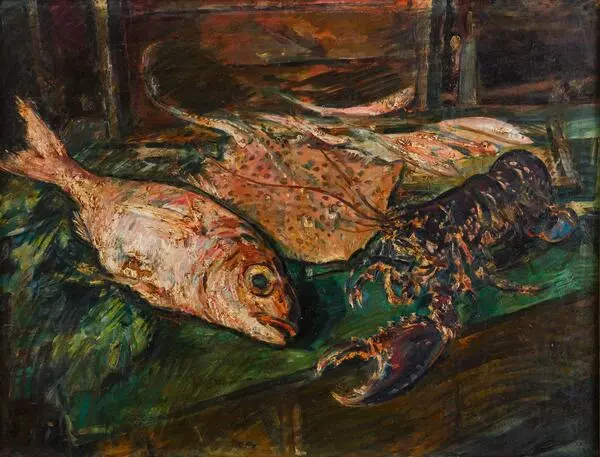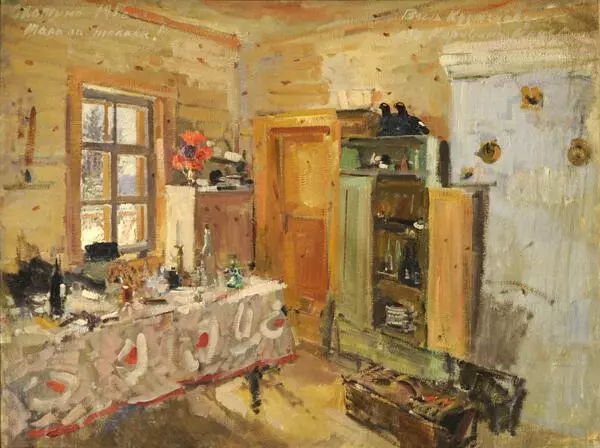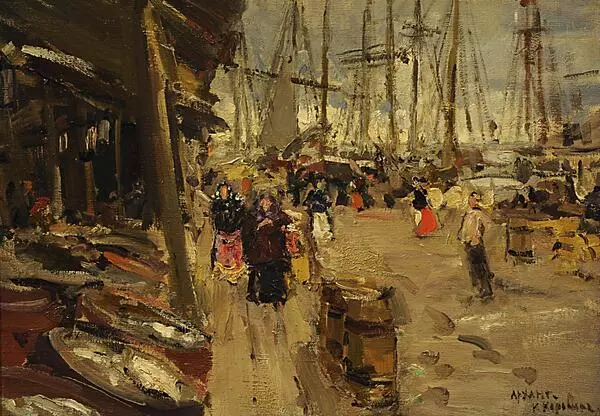The Russian painter, theater artist and writer Konstantin Alekseevich Korovin, a student of ‘the Wanderers’ Valentin Serov and Vasily Polenov, became the founder of the direction of Russian impressionism and remained faithful to him all his life. Not having yet been to Paris, not having seen the paintings of Monet, Sisley, Renoir and Pissarro,
In the South
Creation period
1906
Dimensions
65,5x54,5 cm
65,5×54,5 cm
65,5×54,5 cm
Technique
oil on canvas
Exhibition
4
Open in app#1
Konstantin Korovin
In the South
#15
#5
he already painted his work with sweeping strokes, erasing precise lines, not trying to convey a portrait or landscape, but trying to capture the instant state of life, nature and man, the light-air environment, mood and atmosphere.
The life credo adhered to by the artist was – ‘There is a color in every molecule of life’. And after a trip to Paris in 1888, where he was sent by philanthropist Savva Mamontov, Konstantin Alekseevich wrote: ‘There were no artists above the impressionists’.
Valentin Alexandrovich Serov (1865–1911). Portrait of the painter Konstantin Alexeevich Korovin. 1891. Oil on canvas. State Tretyakov Gallery, Moscow
#16
Konstantin Korovin could masterfully sketch a small sketch for a couple of hours of work in the open air. Brushstrokes in his paintings form a colorful whirlwind, in which it is sometimes difficult to distinguish outlines.
#17
Konstantin Alexeevich Korovin (1861–1939). Paris. 1907. Oil on cardboard. Penza Picture Gallery named after K.A. Savitsky
In addition, unlike the French impressionists, he often used rich dark colors, never avoided black paint. Contemporaries called Konstantin Korovin ‘Mozart’ and ‘Paganini’ in painting, emphasizing the influence he had on all Russian art.
#18
Trying to work more and more with pure bright colors, to fill his canvases with light and air, Konstantin Korovin turns to the landscapes of the southern Crimea, where he first arrived, like in Paris, with Savva Mamontov. He paints Yalta, Sevastopol, Alupka and most of all Gurzuf, where he lived at his country house for a long time in the 1910s. The study ‘In the South’ of 1906 belongs to the early period of these works. The artist was able to convey the immediacy of his enthusiasm with southern color: the light seemed to melt the contours of objects, the pier with boats, roofs of houses and an island of greenery was barely distinguishable, the mountains melt in a haze, passing into the sky.
#19
A landscape has no purpose if it is only beautiful. It should have a story of the soul. It should be like a sound that matches the feelings. It’s hard to put into words, it’s so much like music.
Konstantin Korovin
#20
Konstantin Korovin became one of the first Russian motorists. He loved to race around the Crimea in a car; from time to time, he stopped, took out an easel, quickly sketched and went on.
In Tsarist Russia, Korovin was also the main decorator of the imperial theaters: Alexandrinsky and Mariinsky in the capital, Bolshoi and Maly in Moscow.
#21
Konstantin Alexeevich Korovin (1861–1939). Eastern Fantasy. Early 20th century. Tempera on canvas. Penza Picture Gallery named after K.A. Savitsky
#22
There was no place for the first Russian impressionist in Soviets, and in 1922 he left for Paris, where his other talent, literary, was revealed. He dictated memoirs, published letters, stories, and memoirs and desperately missed Russia, where he couldn’t return.
#23
Penza Regional Picture Gallery named after K.A. Savitsky
read morehide
00:00
00:00
1x
In the South
Creation period
1906
Dimensions
65,5x54,5 cm
65,5×54,5 cm
65,5×54,5 cm
Technique
oil on canvas
Exhibition
4
Open in app
Share

